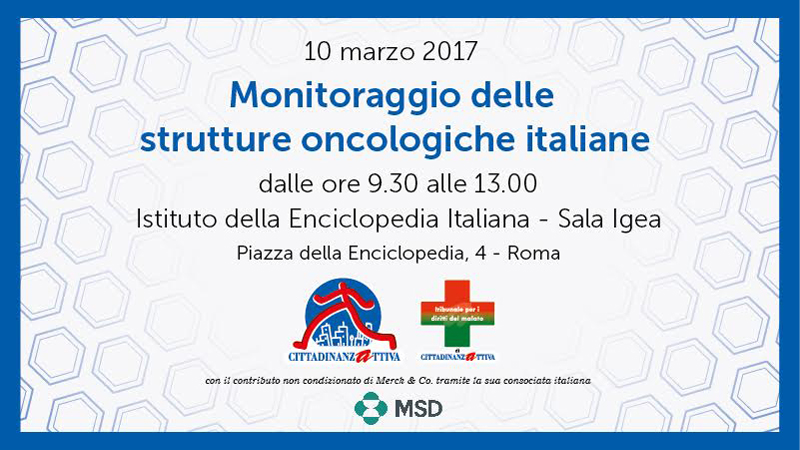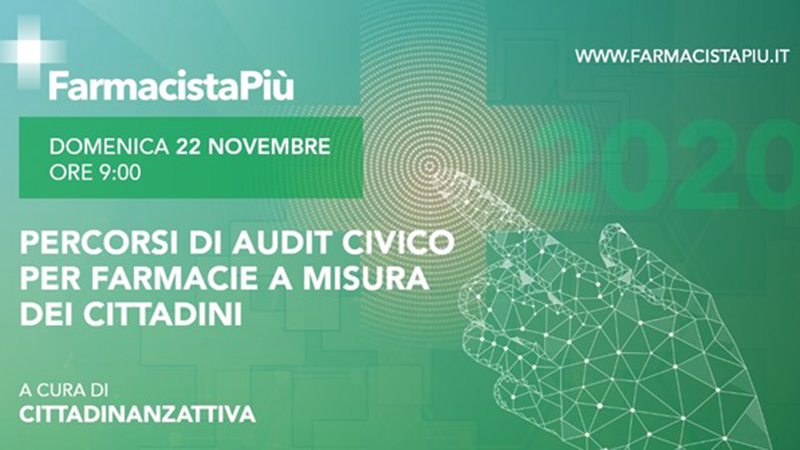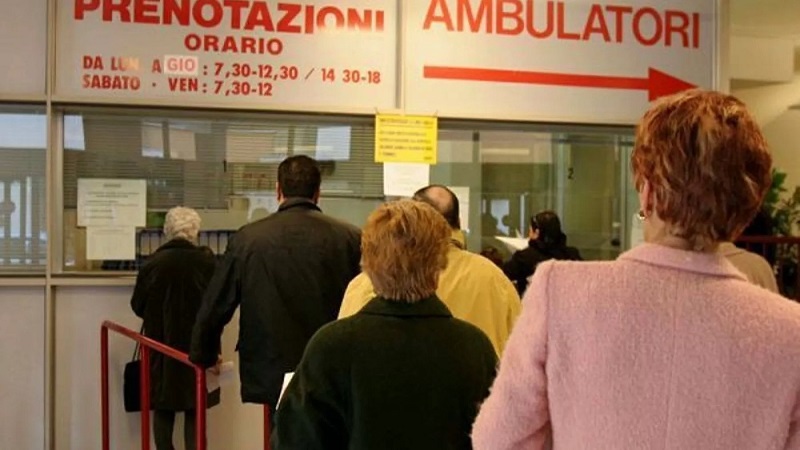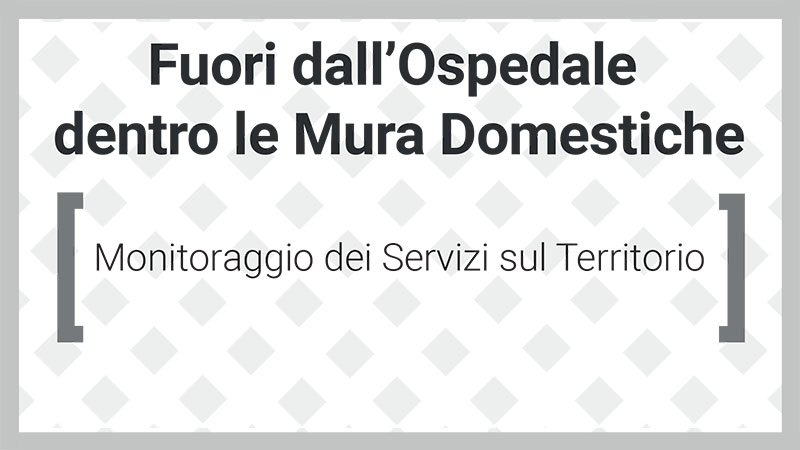
Good customization of patient’s health care. Management of waiting times, computerization and continuity of care should be improved. Online can be found the results of every facility, a guide to choose where to take care of yourself.
The most part of health care structures guarantee a proper care of oncological patients through specialized equipès, attention to the customization of the treatment course and release of the exemption code already by the diagnostic suspect in the 50% of the facilities. Good the communication with the patient and his family, as well as the appropriateness and the comfort of spaces in hospital wards and day hospitals. Nevertheless, several critical aspects still exist: first of all, the access to diagnostic services is not guaranteed within 72 hours from one facility out of four. Delays and inhomogeneity regarding the access to hospital medicines and lack of staff recruitment in response to the institution of oncological networks. Another sore point is also the assessment of the continuity of care with unsatisfying percentages for the absence of the case manager figure in half of the facilities and the lack of coordination with general practitioners during the dismissal of the patient.
Some progress should be made concerning the evaluation of the consumer’s satisfaction, along with transport services between household and hospital to accomodate the cultural, ethnic, and religious differences. Another area that requires improvement is the one regarding the computerization of procedures, starting by the electronic health file available only in half of the cases.
These are some of the main results of the Civic monitoring on oncological facilities carried out by Cittadinanzattiva - Court for the rights of patients thanks to the unconditioned contribution of MSD Italia and presented today in Rome. Starting by today online on http://www.cittadinanzattiva.it/monitoraggio-oncologie-2016 the results achieved from the single structures monitored in order to compare strengths and areas that require improvement. A useful guide to help the citizen learn about the services and choose where to take care of himself.
“We have identified an attention that simplifies cancer patients’ life, for instance that of guaranteeing, in one structure out of two, free access to visits and exams, through the recognition of the pathology exemption (code 048) already during the diagnostic suspect. Making it a chargeable right is essential and that is why we ask a concrete commitment by the Ministry and Regions also within LEA”, comments Tonino Aceti, national coordinator of the Court for patients’ rights/Cittadinanzattiva. “Greater assurance has to be defined also on the respect of the maximum waiting times in the oncological area, for instance by making it an evaluation criterion for general and departmental Directors.
Furthermore, we expect that the fund for the innovative medicines foreseen in budget law will be used to reduce both access time and the inhomogeneity for the innovative oncological medicines in hospital facilities. Strengthening the commitment to better qualify the health care path, bringing everyone at the levels of the best, as well as the relation between hospital and territory, to avoid that the person in the transitional phase feels aggravated by further unnecessary burdens, is also needed. Finally, the evaluation activity of services’ quality needs to be strengthened, making all the results transparent and accessible”.
At the collection of all data CIPOMO-which stands for “Collegio Italiano dei Primari Oncologi Medici Ospedalieri (Italian Association of Consultants in Medical Hospital Oncology) – has actively collaborated. The involved associations on the working table were several, AIL-Associazione Italiana contro le Leucemie (Italian Association against Leukemia); Lymphoma and myeloma ONLUS; FAIS ONLUS- Federazione Associazioni incontinenti e stomizzati (Federation of Incontinent and Stomata Associations); WALCE- Women Against Lung Cancer in Europe; IPASVI- Federazione Nazionale Collegi Infermieri (National Federation of Nurses Colleges); Istituto Nazionale dei Tumori di Milano (National Cancer Institute of Milan); Ospedale Civile di Ovada (Civil Hospital of Ovada); SIFO- Società Italiana di Farmacia Ospedaliera (Italian Hospital Pharmacy Society); S.I.P.O.- Società Italiana di Psico-oncologia (Italian Psycho-oncology Society).
62 the monitored facilities of 18 regions (the facilities of Basilicata, FVG and autonomous region of Bolzano did not join); in 23 of them the oncological Day Hospital was monitored, in 39 of them both the ODH and the oncological hospital wards.
121 the factors examined through the monitoring questionnaire, with the objective to investigate: the respect of the 14 rights of the European Charter of Patients’ Rights - the attention from the facilities to the needs and rights of the person with cancer and of his family- the capacity of global care - the provided services - the level and the quality of the assistance- the availability of oncological medicines.
Organizational aspects
Every day in Italy a thousand people circa receives cancer diagnosis and it has been calculated that in 2020 the cancer patients will be 4 million and a half. The impact is higher in Northern Italy than in the South, but the survival values for some tumors remain higher in northern areas. Currently, oncological networks, intended as “the coordination of all the actions that concern the assistance of the cancer patient, both inside and outside the hospital”, are active in Veneto, Piemonte, Lombardia, Toscana, Trentino and Umbria; are about to be activated in Emilia Romagna, FVG, Lazio, Liguria, Alto Adige, and Sicilia; while in all the other regions they have not yet been activated.
From our investigation, it results that 52% of the monitored facilities belong to a formal oncological network, but in reality it consists mainly of structures that work online guaranteeing the necessary services despite the fact that there is no formal constitutive act.
All are equipped with an oncological Day Hospital, the radiotherapy service is active in 55% of the structures, the emergency room or DEA in 81% of them, the Center for Pain Therapy in 89%, the service of Psycho-oncology in 73% of them. Less widespread are the services for oncological rehabilitation (present in 43% of the facilities), and the hospice (in 44%).
In 98% of the cases you contact the CUP that in 75% of the facilities it guarantees the centralization of appointments for the entire diagnostic and therapeutic process, and in 85% of the cases it guarantees the opening hours higher than the 36 weekly hours. The possibility to make an appointment online it is only guaranteed in 28% of the facilities.
Despite 70% of the facilities circa is equipped with a management software for organizing and managing health care processes, these systems are still not entirely satisfying: for instance, they do not communicate with the screening centers and do not allow the evaluation of the PDTA’s effectiveness; moreover the electronic health file is used in the daily practice only in 55% of the facilities and only in 41% of them it is shared with the family doctor.
In more than 90% of the facilities a reception service exists in order to inform the citizen on the services and appointments and it guarantees a proper care, booking also the next follow ups to the visits.
The citizen’s path in the service
One facility out of four does not guarantee the access to diagnostic performances within 72 hours to patients with a suspect cancer diagnosis; better are the access times to the possible surgical procedure guaranteed almost in nine out of ten (87%) within 60 days from the diagnostic suspect; and the same percentage (89%) guarantees the start of the chemo or radio-therapeutic treatment. However only 71% of the facilities provides for the monitoring of waiting lists and the sending of all data to the regions. A good aspect concerns 50% of the facilities which assigns the exemption code 048 already from the diagnostic suspect.
95% of them declares to guarantee the specialists’ involvement in the diagnosis and care process but, in listing the figures of the multidisciplinary group, it is discovered that some remain absent: this is the case of the social worker (absent on four equipès out of five), of the pharmacist (absent in 69% of the cases), of the pain therapist or specialist in palliative care (absent in half of the cases), of the psychologist (absent on one case out of three) and of the nurse (absent on one case out of four). Moreover, only 20% of the facilities involve in the group the general practitioner. The case manager, that is a sort of tutor for the patient, is present in one out of two.
In 42% of the structures maximum 15 days in average are needed for the insertion of new medicines in the hospital therapeutic manual. The data regarding the facilities that take from 3 to 4 months (7%) and from 4 to 6 months (9%) to introduce life-saving medicines should not be ignored. In addition to this, only 52% of them provide for procedures to support the cost of medicines that did not pass from NHS.
Another area that should be improved is the one regarding the management of the stocks and supplies of atineoplastic medicines which sees in only 51% of the facilities a software capable of posting online this information together with the other facilities.
Concerning the clinical trials, despite 81% of the facilities perform research, only 53% of them are part of a network in which information on ongoing trials are shared, only in 35% a procedure for the sending of the patient to structures with active trials is provided and only in 30% of them all the information on the trials are published on websites.
Excellent are the results on the customization of the cures, guaranteed in 97% of the structures, and on the attention to pain, guaranteed in 94% of them.
Citizen orientation and humanization
Almost all the facilities dedicate a contact person of the èquipe to the communication of the cancer diagnosis, which takes place through direct and personal interviews with the patient. 95% of them offer free psychological support for patients who request it and 77% of them provide it in a structured and continuous way. Several critical areas remain. Today, 66% of the facilities still do not offer guesthouse services for the families of hospitalized patients. Furthermore, the transport from home to the structure and vice versa, for chemo and radiotherapy, is guaranteed only in 60% of them and the bodies for the handling of administrative practices is guaranteed only in 23% of the facilities. In the context of cultural, ethnic and religious non-discrimination, only 48% of the facilities offer a cultural mediation service, 53% an interpreting service and only 19% offer multilingual informed consent forms. Another negative data is that regarding the absence of a dietary handbook that respects religious beliefs, present only in 55% of the structures.
From a comfort point of view, 77% of oncology wards have rooms with no more than two beds, toilets inside the rooms (92%) and in 54% of them air conditioning systems adjustable by patients. Only 33% of the wards make the Wi Fi network available. The lounges reserved for hospitalized patients to meet relatives and friends outside the ward were also monitored. These lounges were mostly comfortable, providing for a suitable number of seats (for 87% of the structures), air conditioning systems (79%), the presence of television (in 74%), drink dispensers (in the 64%), library (in 54%). Breakfast is served in 92% of the departments after 7:00 am, lunch in 95% after 12:00 pm, dinner after 7:00 pm in 62% of the facilities. 90% of the departments offer the choice to patients, who do not have restrictive diets, between two or more menus.In Day Hospitals, TV can be found in 90% of the cases, libraries and cable radio systems in 47% of the cases, chairs with MP3 headphones in 21% of them. 79% of DH offers mid-morning drinks and snacks.As for parking, 92% of the structures have one reserved for patients and visitors. 81% have free parking spaces while 47% have parking fees. However, environments where architectural barriers are still present still exist, for example only 90% of the structures are totally accessible in the Day Hospital.
Participation and transparency
The area presents grey areas. 61% of the facilities constantly performs investigations on the satisfaction of the clients, only 65% makes annual audit on the evaluation of the quality and of the performances and, among the indicators made for the purpose of performance evaluations, only 71% of them provides for the monitoring of the waiting times and for the sending of all data to regions.
(document translated by Maira Cardillo, ACN staff)












